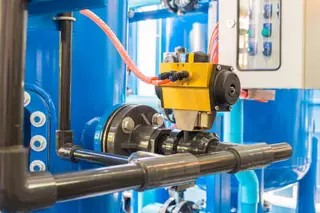


Maximizing the Lifespan of Control Valves: Common Issues, Smart Strategies, and Maintenance Best Practices
We are a leading control valve manufacturer in China, providing high-quality valves and control actuators designed to meet a wide range of industrial applications.
Control valves are vital to regulating flow, pressure, and temperature in process industries. Their performance directly affects system stability, energy efficiency, and operational safety. Over time, even the most durable valves can fail due to wear, corrosion, or improper setup. Understanding common issues and implementing smart strategies can significantly extend a valve’s lifespan and reliability.
1. Internal Leakage
This occurs when the valve fails to seal properly, allowing fluid to pass even when closed. Causes include actuator misalignment, worn valve seats, DCS signal errors, or dirt on sealing surfaces. Though often not visible, internal leakage can impact process efficiency and lead to further damage if ignored. Technicians should inspect, clean, or replace damaged parts and recalibrate the actuator as needed.
2. External Leakage
Easier to spot, external leakage typically stems from worn packing, incompatible sealing materials, or structural fatigue due to temperature or vibration. It’s essential to replace seals, confirm material compatibility, and tighten bolts to specified torque values to prevent further leakage and environmental hazards.
3. Valve Sticking
A sticking valve fails to respond correctly to control signals. Over-tightened packing, corrosion, or debris can cause this issue. Disassembly, cleaning, and appropriate lubrication, along with proper packing torque, usually resolve the problem.
Operate at Wide Openings Initially
Valves erode most at the throttling point. Starting operation at a wide opening (e.g., 90%) concentrates wear at the tip. As wear progresses, gradually reduce the opening to shift erosion downstream, extending service life.
Reduce Resistance Ratio
Minimizing pressure drop across the valve helps reduce internal erosion. This can be achieved by adding downstream orifices or slightly closing adjacent manual valves to distribute pressure more evenly.
Downsize Oversized Valves
An oversized valve operating at low openings wears quickly and struggles with control accuracy. Replacing it with a smaller valve or a smaller trim improves both performance and durability.
Redirect Erosion
Design the valve so erosion occurs on less critical or replaceable areas rather than sealing surfaces. This protects functional integrity while simplifying maintenance.
Reverse Flow Direction
If design permits, using a “flow-to-close” configuration pushes erosion away from the sealing surface. This technique preserves sealing performance and improves longevity.
Reactive Maintenance (Passive)
Only addresses failures after they happen. Though sometimes unavoidable, this approach risks costly downtime and should be limited to non-critical systems.
Scheduled Preventive Maintenance
Regular inspections, cleaning, flushing, and seal replacements can significantly reduce failure risk. Avoid installing valves in high-vibration zones or tightening bolts excessively, which can lead to leaks or cracks.
Predictive Maintenance
Smart diagnostics and condition monitoring (via intelligent positioners or sensors) help detect issues early. This method minimizes manual checks while maximizing uptime and reducing maintenance costs.
Control valves are long-term assets. With strategic operation and proactive maintenance, their lifespan can be extended significantly. By addressing early warning signs and implementing smart design and maintenance practices, operators can ensure consistent performance, minimize risks, and reduce lifecycle costs.Know more about Google SEO Directory
